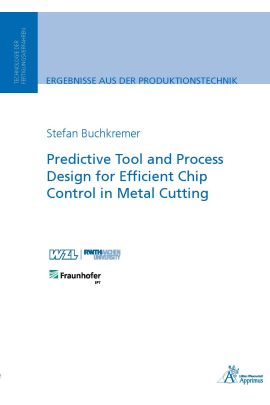In metal cutting, the chip form is a machinability criterion which may dominate the process stability, in particular of automated manufacturing systems. Unbroken chips often hinder their efficient removal and may damage the machined surfaces. Despite its high industrial relevance, the design of chip breakage properties of tools and processes is still dominated by cost intensive, empirical-iterative approaches. Validated predictive modeling helps to decrease these experimental efforts. However, it also requires a theoretical understanding of the underlying physics of chip breakage as well as their controllability through the parameters of metal cutting.
The goal of this thesis was to develop and validate a predictive methodology of tool and process design for stable chip breakage in metal cutting.
In an inductive step, relationships were identified, which essentially represent the impacts of the technological parameters of metal cutting on the physics of chip breakage, which are governed by ductile material fracture on the chip free surface. It was cybernetically justified that the relationships between the chip geometry and the thermo-mechanical state variables in the breakage location fulfill this requirement.
In the following deductive step, the sensitivities of the strain, temperature and stress state in the breakage location with respect to the chip geometry parameters were investigated quantitatively by developing and validating three sub-models. Furthermore, a new ductile fracture model was developed based on the works of Bai and Wierzbicki, which considers the stress state and temperature impacts on the final fracture strain. Its implementation into a three dimensional Finite Element model of external longitudinal turning of AISI 1045 (C45E+N) showed that the predicted failure locations as well as the directions of crack propagation were in close agreement with experimental observations. The three sub-models enabled the non-iterative calibration of the fracture model directly from experimental chips in hand, which therefore also incorporated the loading path impact.
In the final deductive step, all models were merged into a systematic, predictive methodology of tool and process design for stable chip breakage. A case study on turning aluminum AA7075-T6511 (AlZn5,5MgCu) showed that the impacts of the tool and process parameters on the chip breakage behavior were predicted accurately without prior knowledge of the ductile material properties.
| Autor | Buchkremer, Stefan |
|---|---|
| Lieferzeit | 3-4 Tage |
| Gewicht | 0.25 kg |
| Erscheinungsdatum | 16.12.2015 |

